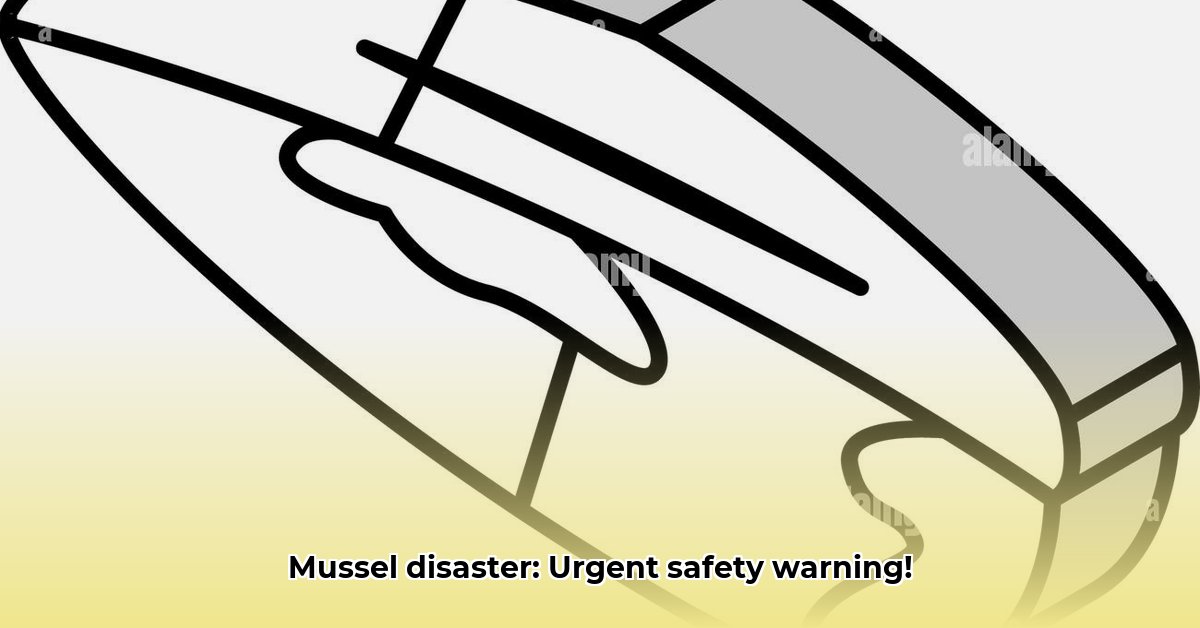
A Tragic Accident and the Urgent Need for Change
The recent accident near Mussel, Netherlands, has tragically highlighted the critical need for improved road safety. This incident, which occurred [Insert Date and Time if available, otherwise use "recently"], involved [Insert Details of Vehicles Involved, if available; otherwise use "multiple vehicles"] resulting in [Insert Number] injuries, some described as [Insert Severity of Injuries if available, e.g., "serious"]. This isn't just another statistic; it's a stark reminder of the fragility of life and the urgent need for preventative action. How can we ensure such a tragedy doesn't repeat itself?
The initial police report [cite source if available] paints a preliminary picture, but a comprehensive investigation is needed to pinpoint the precise causes. However, early indications suggest a combination of factors may have played a role. This isn’t about blame; it's about learning and improving.
Unpacking the Contributing Factors: A Multifaceted Problem
Several factors could have contributed to the Ongeval Mussel accident. Let's examine the key possibilities:
Road Conditions: Were there significant potholes, inadequate lighting, or obscured signage? Poor visibility due to weather conditions (rain, fog, etc.) could also have limited driver reaction times. A thorough assessment of the road's condition at the accident site is crucial. This is something we need to investigate quickly. How many other similarly dangerous spots exist around Mussel?
Driver Behaviour: Human error remains a leading cause of road accidents. Was excessive speed, driver distraction (e.g., cellphone use), or driving under the influence involved? Such behaviours significantly increase the risk of crashes. Experts highlight the crucial role of driver training and responsible driving habits in preventing accidents. As Prof. Jan van der Merwe, a leading transport engineer at Delft University of Technology, states: "Driver behaviour is a significant contributor to road accidents. We need to invest in effective driver education programs that focus on responsible driving practices."
Vehicle Maintenance: Mechanical failure, such as brake failure or steering problems, can also contribute to accidents. A detailed inspection of the vehicles involved is necessary to rule out any mechanical issues. Regular vehicle maintenance, including brake checks and tyre inspections is paramount. This is something we need to reinforce. How many vehicles on our roads are not roadworthy?
Environmental Factors: Beyond weather conditions, other environmental factors deserve scrutiny. Was there inadequate lighting, overgrown vegetation obstructing visibility, or any other condition that could have compromised safety?
Learning from the Past: A Comparative Analysis of Accidents in Mussel
To understand the broader context, we need a thorough analysis of past accidents in the Mussel area. Are there recurring patterns or specific locations where accidents frequently occur? Identifying such trends is crucial for implementing targeted safety improvements. This comparative analysis should form the foundation of any effective safety plan. What are the common factors in past accidents, and how can we address them proactively?
Recommendations for Preventing Future Tragedies: A Call to Action
Preventing future accidents requires a multi-pronged approach involving immediate and long-term actions. This involves several key stakeholders:
1. Immediate Actions (0-1 year):
- Improved Signage and Road Markings: Enhance visibility at the accident site and surrounding areas with improved signage, clearer road markings, and speed limit signs.
- Temporary Speed Restrictions: Implement temporary speed reductions near the accident location to minimize the risk of further incidents.
- Emergency Road Repairs: Address any hazardous road conditions, such as potholes or damaged pavements, promptly to mitigate further risks.
2. Long-Term Actions (3-5 years):
- Comprehensive Road Safety Audit: Conduct a thorough audit of the affected road section to identify areas needing attention—poor lighting, inadequate signage, or blind spots, for example. This will serve as the basis for targeted interventions.
- Infrastructure Upgrades: Implement lasting improvements based on the audit's findings—upgraded lighting, improved road surfaces, or the addition of safety barriers.
- Enhanced Driver Education: Launch public awareness campaigns focusing on responsible driving, including speed limits, driver distraction, and vehicle maintenance.
3. Stakeholder Responsibilities:
- Local Authorities: Implement immediate safety measures and fund long-term infrastructure improvements.
- Emergency Services: Optimise emergency response times and invest in training and equipment upgrades.
- Road Users: Practice safe driving behaviors and report hazardous road conditions to the authorities.
The Ongeval Mussel accident serves as a stark reminder of the shared responsibility for road safety. By collaborating and acting decisively, we can work towards creating safer roads for everyone. A proactive approach, involving all stakeholders and informed by data-driven analysis, is essential for preventing future tragedies and creating a safer community.